This Georgia O’Keeffe art history lesson for kids introduces elementary-aged students or homeschoolers to the elegant, iconic art of this famous American painter.
Who was Georgia O’Keeffe?
Georgia O’Keeffe, one of America’s most celebrated artists, left an indelible mark on the world of modern art with her captivating paintings of flowers, landscapes, and everyday objects. Her life and work are a testament to her unique vision and determination to express the beauty she saw in the world around her.
Georgia O’Keeffe was born on November 15, 1887, in Sun Prairie, Wisconsin. She grew up in a big family, and from an early age, she displayed a deep appreciation for the natural world. As a child, Georgia enjoyed exploring the Wisconsin countryside, studying the flowers and plants that grew in the fields.
O’Keeffe’s passion for art was apparent from a young age. She began taking art classes and, later, attended the Art Institute of Chicago. Her journey as an artist was well underway, and she was determined to follow her artistic calling.
In 1916, Georgia O’Keeffe moved to New York City, where she would meet the famous photographer and art promoter, Alfred Stieglitz. Stieglitz recognized her unique talent and passion for art, and he played a pivotal role in introducing her work to the world. The two eventually became partners in life and in art.
(O’Keefe always had a brief, but legendary encounter with famed Mexican artist, Frida Khalo).
Georgia O’Keeffe’s art was heavily influenced by nature. She had a special affinity for flowers, and her paintings of blossoms, like the “Jimson Weed/White Flower No. 1,” were among her most iconic works. O’Keeffe had a way of magnifying the smallest details of a flower, revealing its inner beauty in a way that made viewers pause and truly see the wonder of nature.
While Georgia O’Keeffe is perhaps best known for her flower paintings, her love for nature extended to her depictions of the American Southwest. She spent time in New Mexico, where she was captivated by the expansive landscapes, adobe buildings, and the unique shapes of animal skulls. Her paintings of the desert and mountains, like “Black Mesa Landscape, New Mexico” and “Ram’s Head, White Hollyhock-Hills,” reveal her deep connection with the environment.
O’Keeffe’s creativity was not limited to nature; she also found inspiration in ordinary objects. She often zoomed in on these items, transforming them into abstract and intriguing compositions. One of her most famous works in this category is “Cow’s Skull with Calico Roses,” where a simple skull becomes a powerful symbol of the American West.
Georgia O’Keeffe’s work revolutionized the art world. Her unique perspective, striking compositions, and her ability to evoke intense emotions through her paintings made her a pioneer of American modern art. Her art encouraged people to see the world differently, to take time to observe and appreciate the beauty that surrounds us, and to find inspiration in the most unexpected places.
Georgia O’Keeffe’s life and work remain an enduring source of inspiration for artists and nature lovers alike. She demonstrated the power of art to transform the ordinary into the extraordinary and to encourage us all to look closer at the world around us. Her paintings are a reminder that beauty can be found in the simplest of things if we take the time to truly see them, just as she did in her remarkable career as an artist. Georgia O’Keeffe’s legacy lives on, reminding us to appreciate the beauty in every aspect of life.
Key Vocabulary Terms
Precisionism: A style of art that emerged in the early 20th century, characterized by sharp lines, precise geometric shapes, and a focus on industrial subjects. O’Keeffe’s work is often associated with Precisionism.
Abstraction: O’Keeffe’s art often features abstract elements, particularly in her close-up floral paintings where she focused on the essential forms of flowers rather than detailed representation.
Floral Abstraction: O’Keeffe’s flower paintings are a prime example of floral abstraction, where she portrayed flowers in a way that emphasized their shapes, colors, and forms rather than their realistic details.
Modernism: O’Keeffe is considered a modernist artist, a movement characterized by a departure from traditional artistic styles and a focus on innovation and individual expression.
New York Skyscrapers: O’Keeffe created a series of paintings featuring New York skyscrapers. This subject matter is associated with the urban modernism of the early 20th century.
Southwest Landscape: O’Keeffe is renowned for her depictions of the New Mexico landscape, capturing the stark beauty and unique features of the American Southwest.
Minimalism: Some of O’Keeffe’s works can be associated with minimalism, a style that emphasizes simplicity, clean lines, and a reduction of elements to their essential forms.
American Modernism: O’Keeffe is often linked to the American modernist movement, which was a response to the rapid changes in American society and industry during the early 20th century.
Enlargement: O’Keeffe was known for enlarging objects in her compositions, creating a sense of intimacy and abstraction in her work.
Juxtaposition: O’Keeffe frequently placed objects or subjects in her paintings in a way that created interesting visual juxtapositions, highlighting their relationships and contrasts.
Skull Art: O’Keeffe produced a series of paintings featuring animal skulls found in the desert of New Mexico. This subject matter is often associated with her fascination with the cycle of life and death.
Charcoal Drawing: O’Keeffe was skilled in using charcoal for her drawings, and her charcoal works exhibit a different aspect of her artistic talent.
Portrait of An Artist: Georgia O’Keeffe
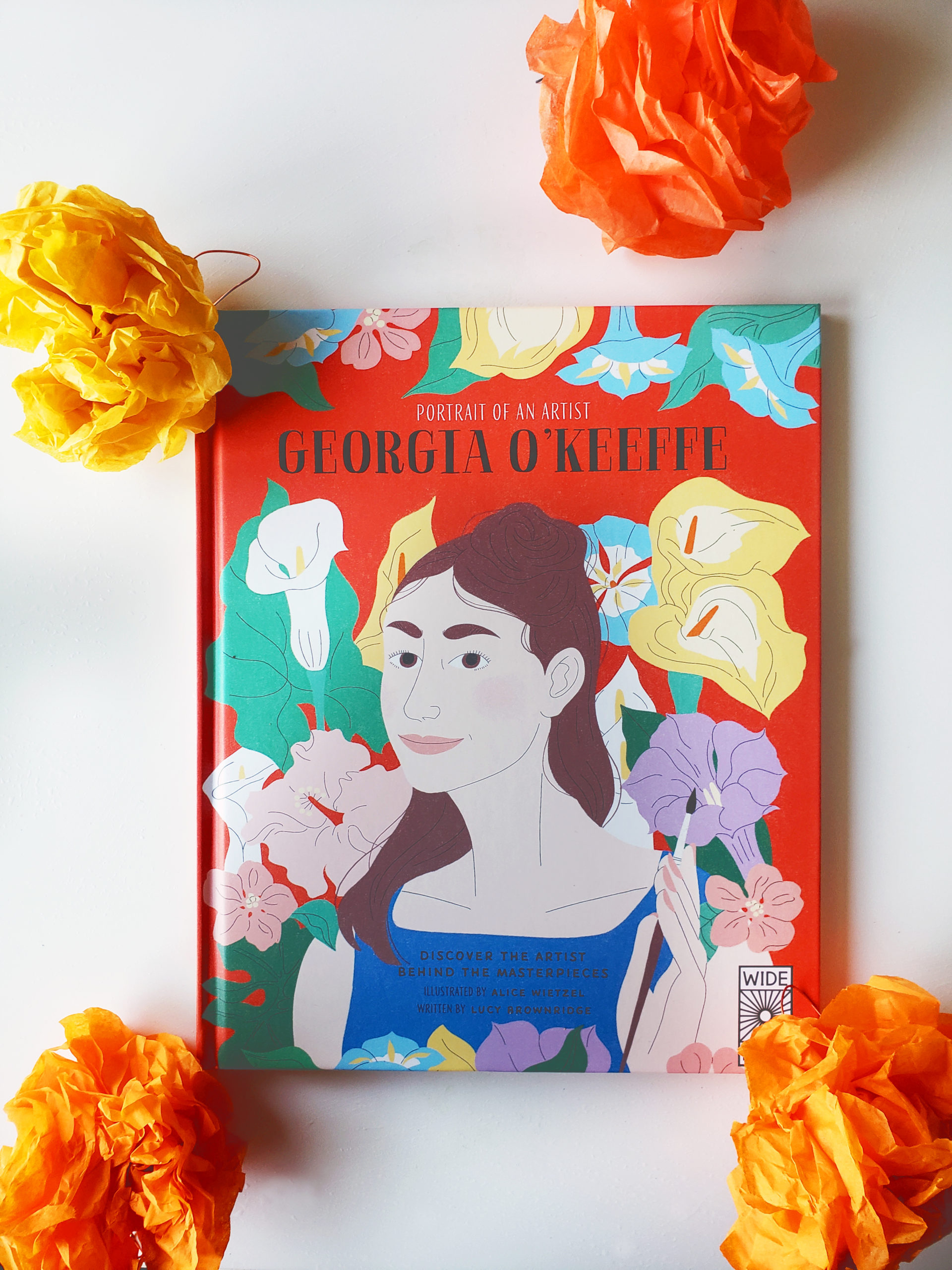
Anchor your Georgia O’Keeffe art history lesson with a solid, beautiful, elementary-level biography.
There’s a few to choose from, but I like (affiliate link —–>) Portrait of an Artist: Georgia O’Keeffe by Lucy Brownridge. (A book from the same series I recommended for my lesson on Frida Khalo).
The stylized artwork and O’Keeffe’s beautifully told life story compliments and enriches this lesson.
Georgia O’Keeffe Project Idea for Kids
This 3-dimensional, multi-media project idea is simple. All you need is watercolors, coffee filters, and small blank canvases.
These are so easy but they all come out differently and the kids really enjoy choosing their own colors.
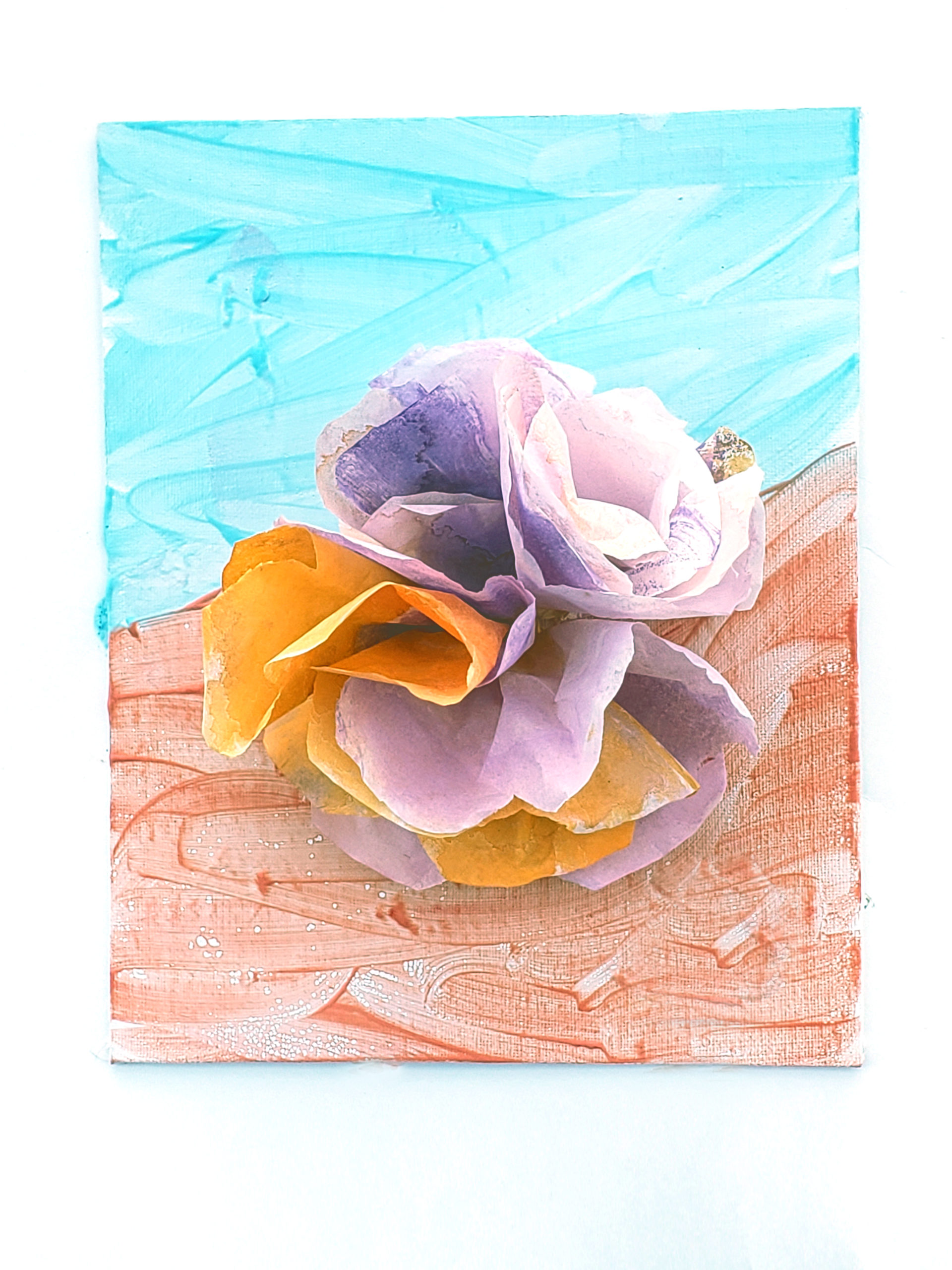
Materials:
-small canvases
-tempera or acrylic
-coffee filters
-watercolors
-glue
Step 1: Paint the canvas.
I was working with 6-year-olds, so we kept it very simple. I just told them to pick two colors—-one for the sky, and one for the desert sand.
But if you want to “upscale” this for older kids, you can talk about blending the horizon and the ground, you can sponge clouds on, and you can even use sand to add texture to the ground.
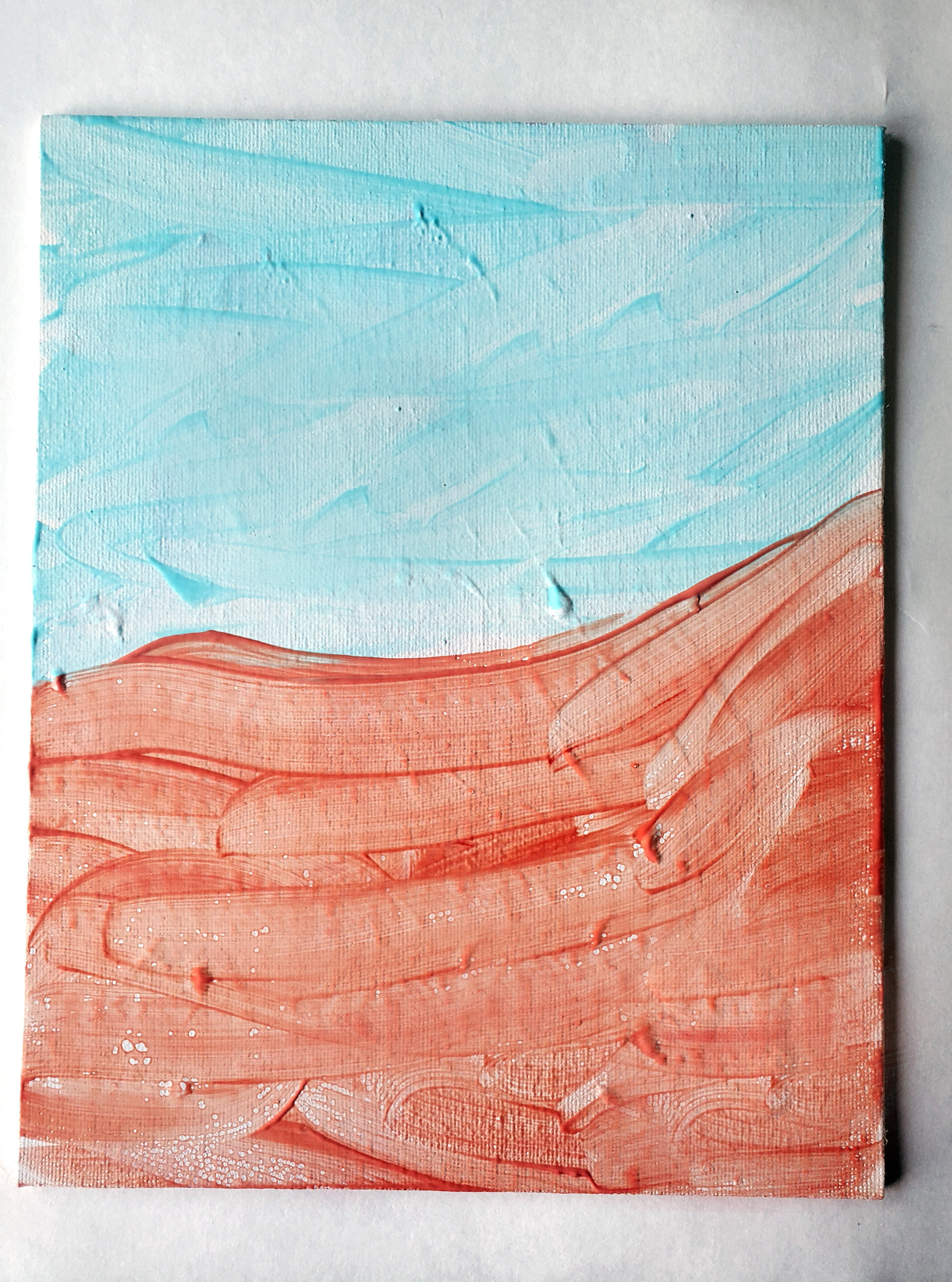
Step 2: Make the coffee filter flowers.
I won’t go into too much detail, because there are already so many tutorials on how to make coffee filter flowers.
We used watercolors to paint them, and they came out super pretty.
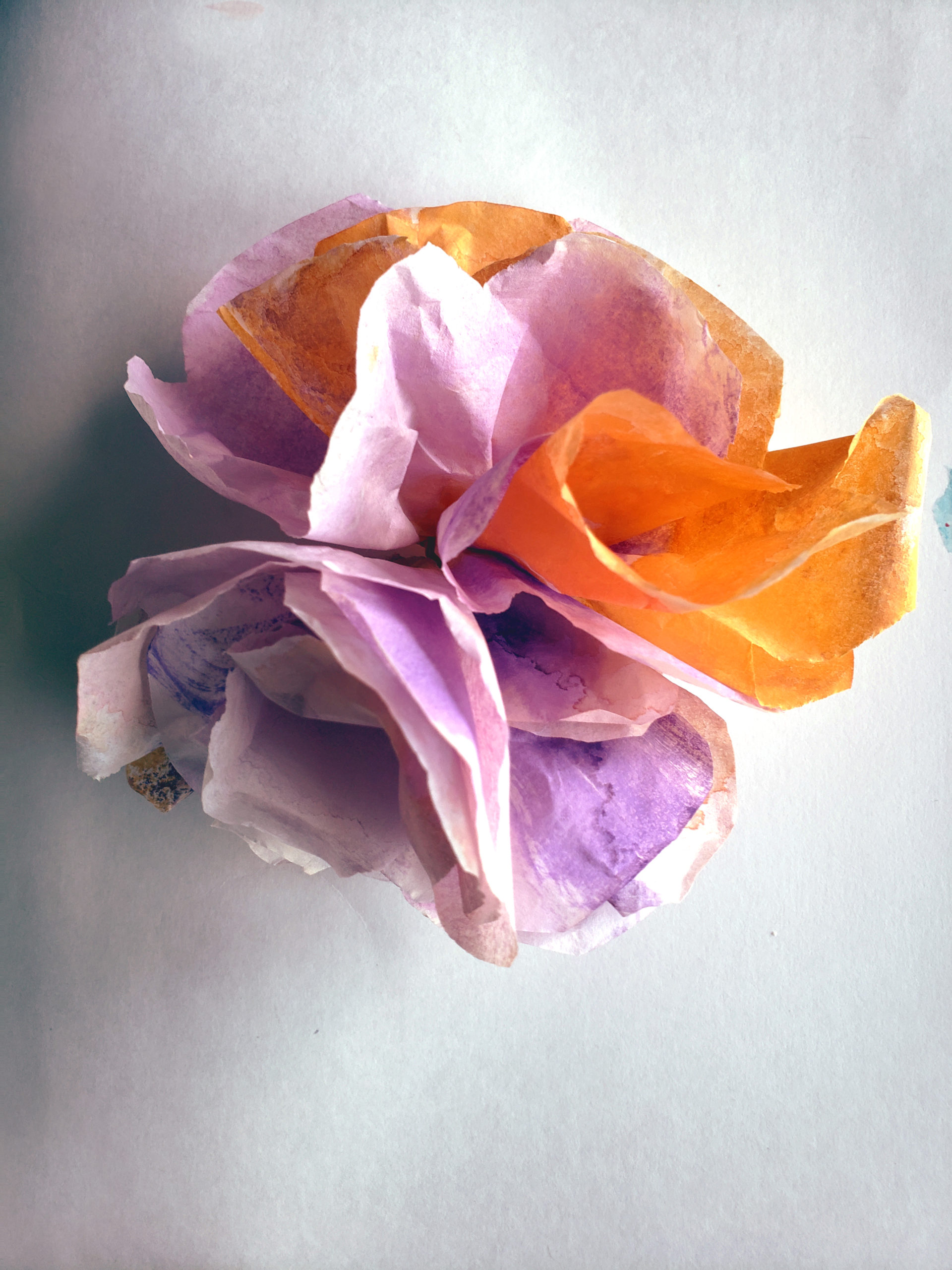
Step 3: Glue the flower on the canvas.
No, seriously. That’s it!
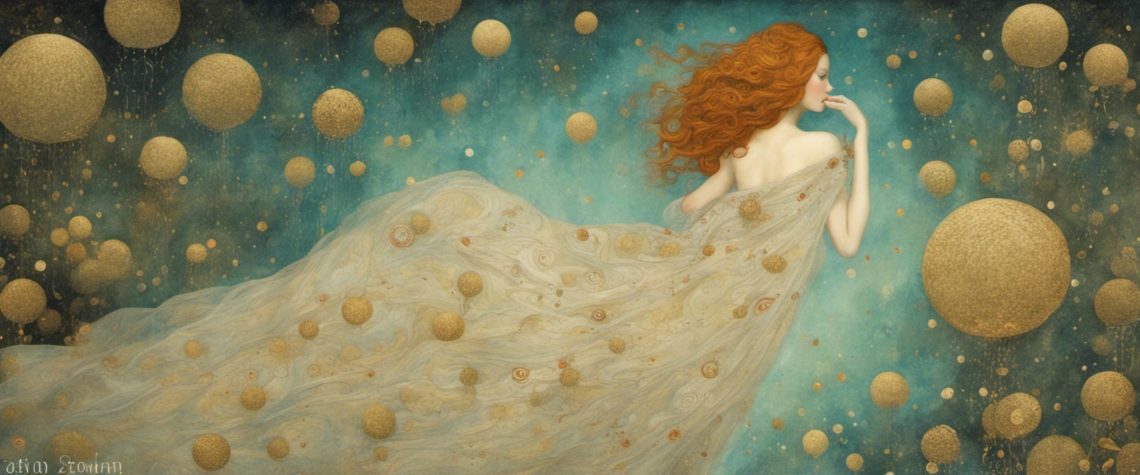
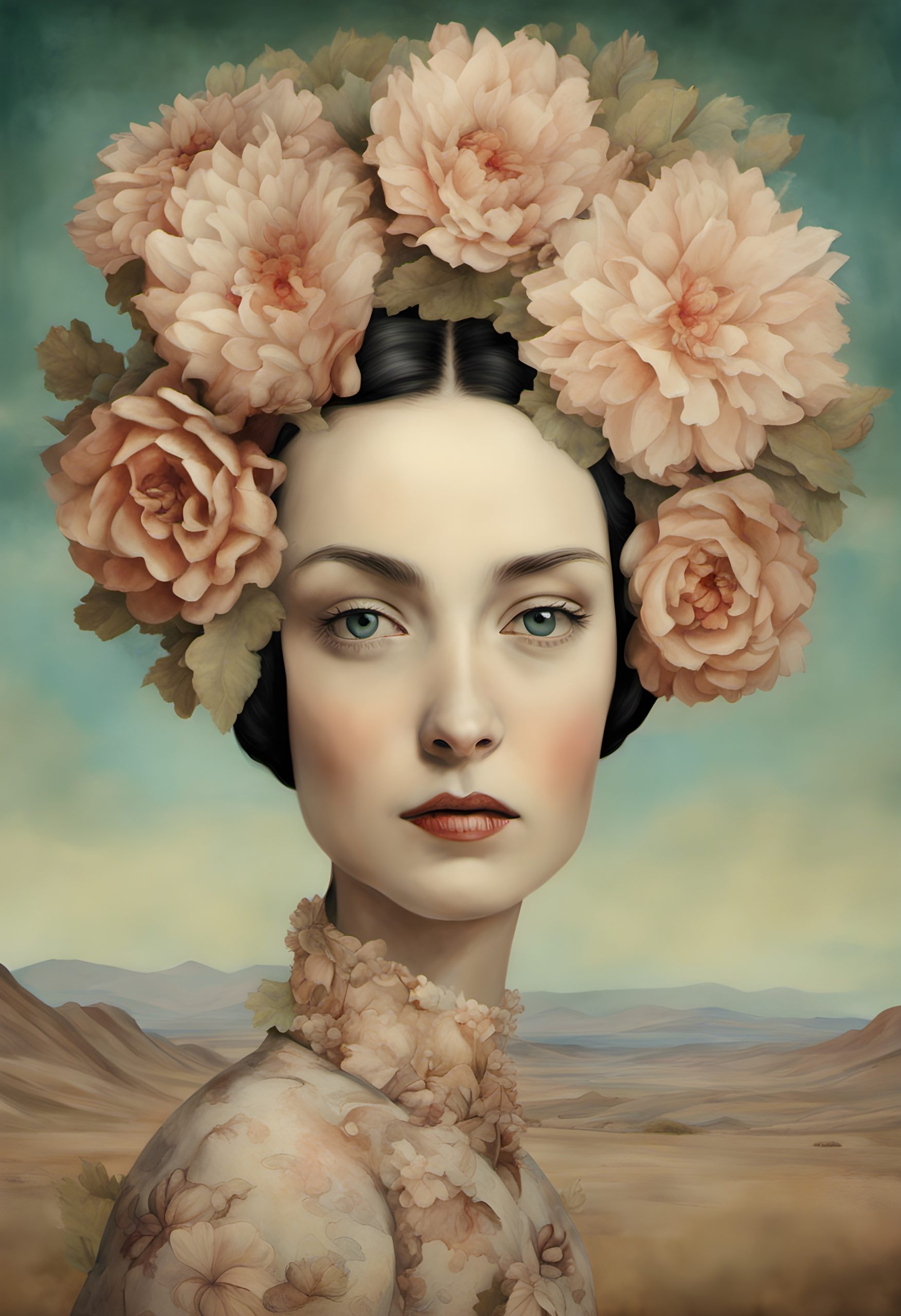
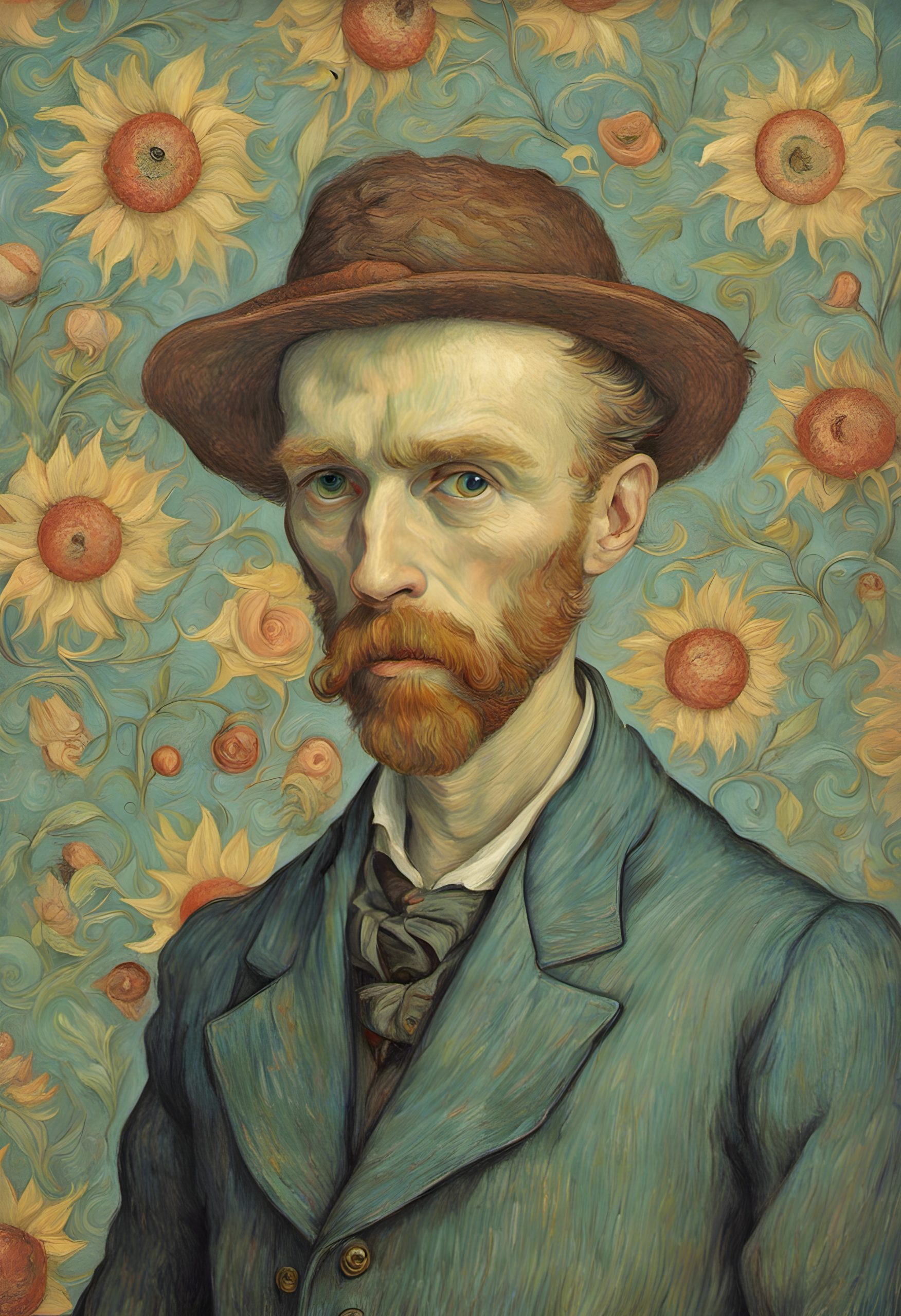
Love it sounds great I’m going to do one with my future Georgia Okeefe she is such a great artist already. Thank you
You’re so welcome!
Great idea! I’ve got a folder with ideas of things to do with the grands. This will go right in it!